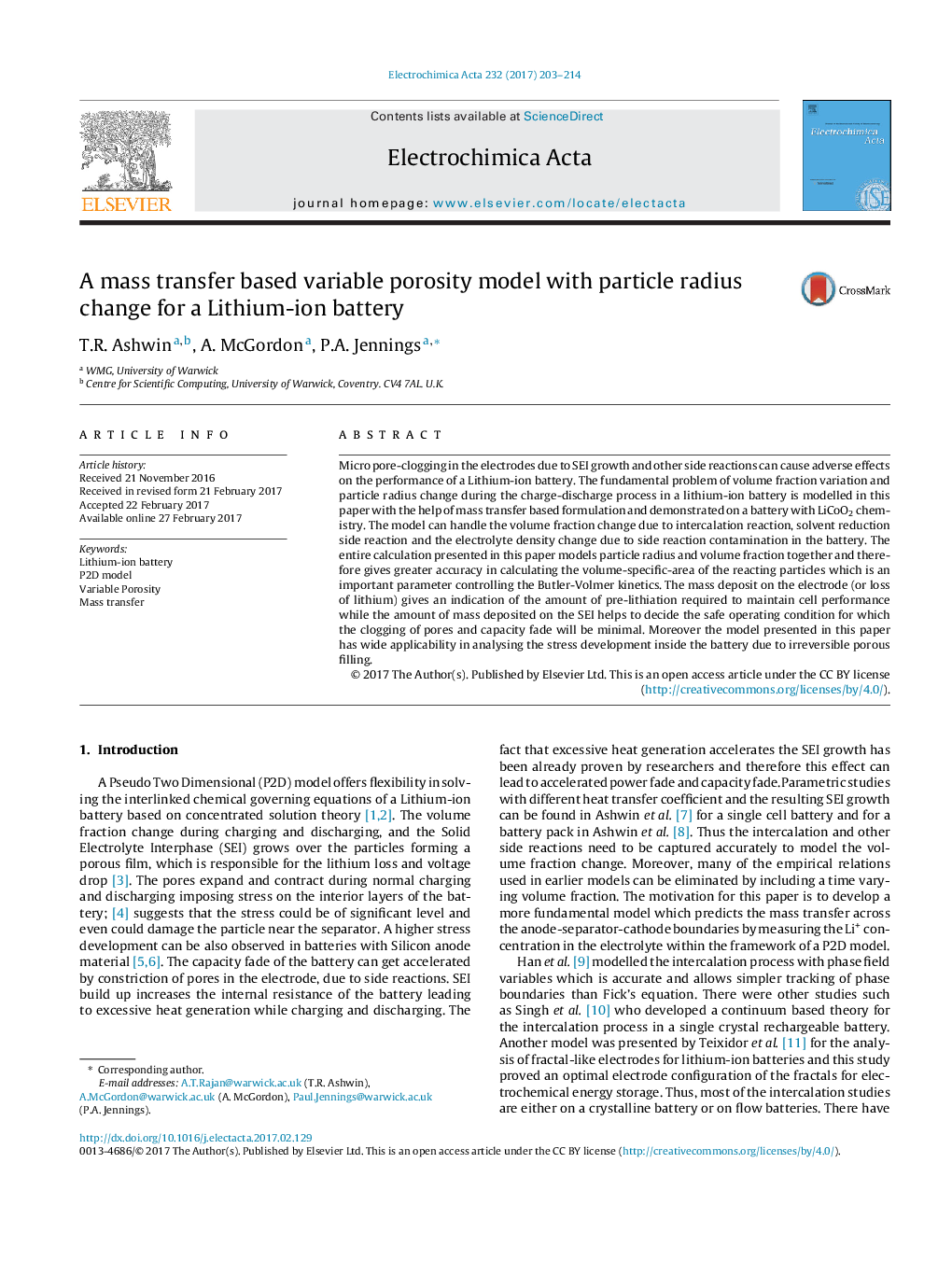| Article ID | Journal | Published Year | Pages | File Type |
|---|---|---|---|---|
| 6471816 | Electrochimica Acta | 2017 | 12 Pages |
â¢Mass transfer based model to calculate the porosity variation and radius change.â¢Can be used with any model that calculates Lithium concentration in electrolyte.â¢Considers SEI as a mass deposition rather than simply an internal resistance.â¢Brings more accuracy to the volume specific area and the Butler-Volmer kineticsâ¢Practical applicability in pre-lithiation, lithium plating and stress calculation.
Micro pore-clogging in the electrodes due to SEI growth and other side reactions can cause adverse effects on the performance of a Lithium-ion battery. The fundamental problem of volume fraction variation and particle radius change during the charge-discharge process in a lithium-ion battery is modelled in this paper with the help of mass transfer based formulation and demonstrated on a battery with LiCoO2 chemistry. The model can handle the volume fraction change due to intercalation reaction, solvent reduction side reaction and the electrolyte density change due to side reaction contamination in the battery. The entire calculation presented in this paper models particle radius and volume fraction together and therefore gives greater accuracy in calculating the volume-specific-area of the reacting particles which is an important parameter controlling the Butler-Volmer kinetics. The mass deposit on the electrode (or loss of lithium) gives an indication of the amount of pre-lithiation required to maintain cell performance while the amount of mass deposited on the SEI helps to decide the safe operating condition for which the clogging of pores and capacity fade will be minimal. Moreover the model presented in this paper has wide applicability in analysing the stress development inside the battery due to irreversible porous filling.
